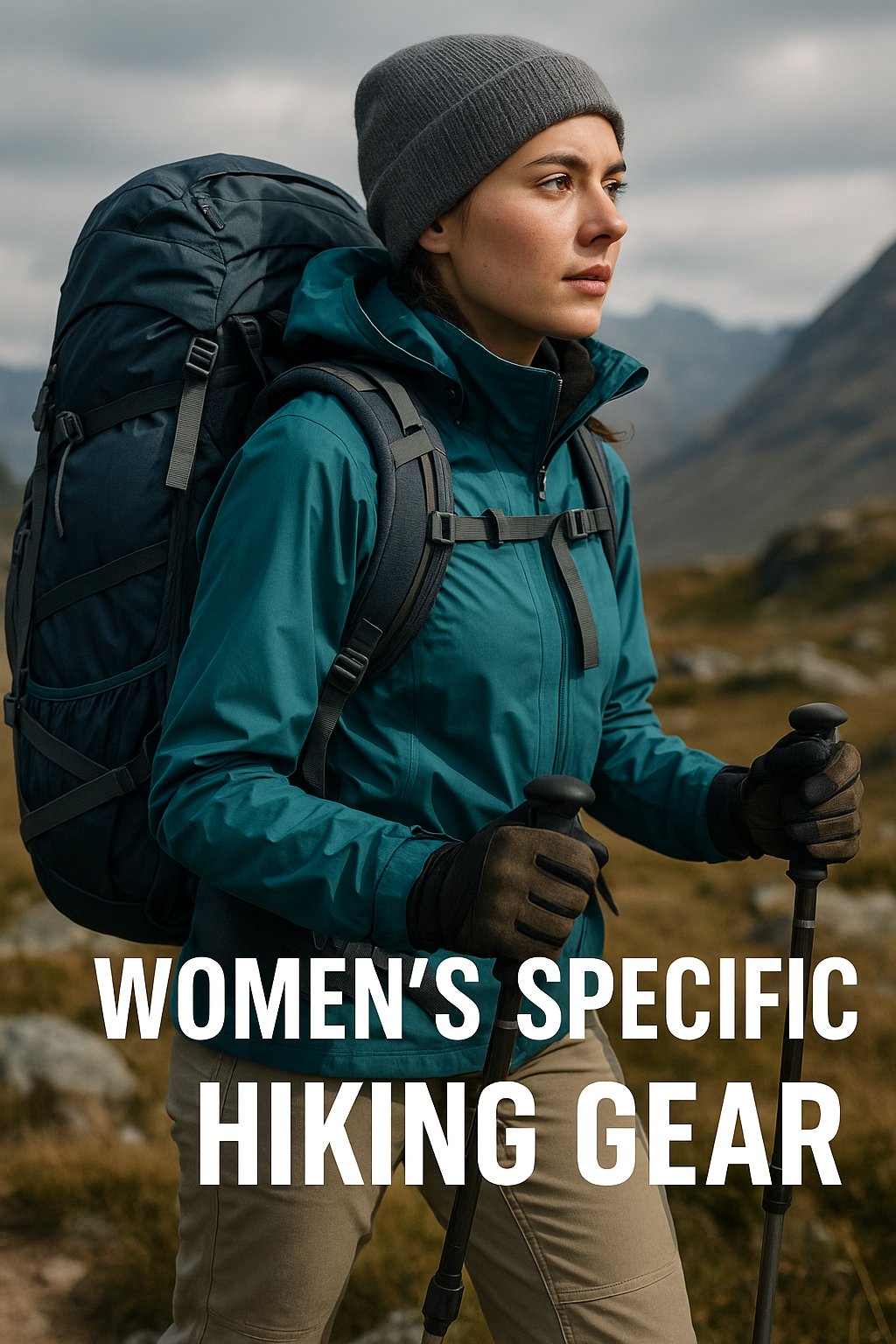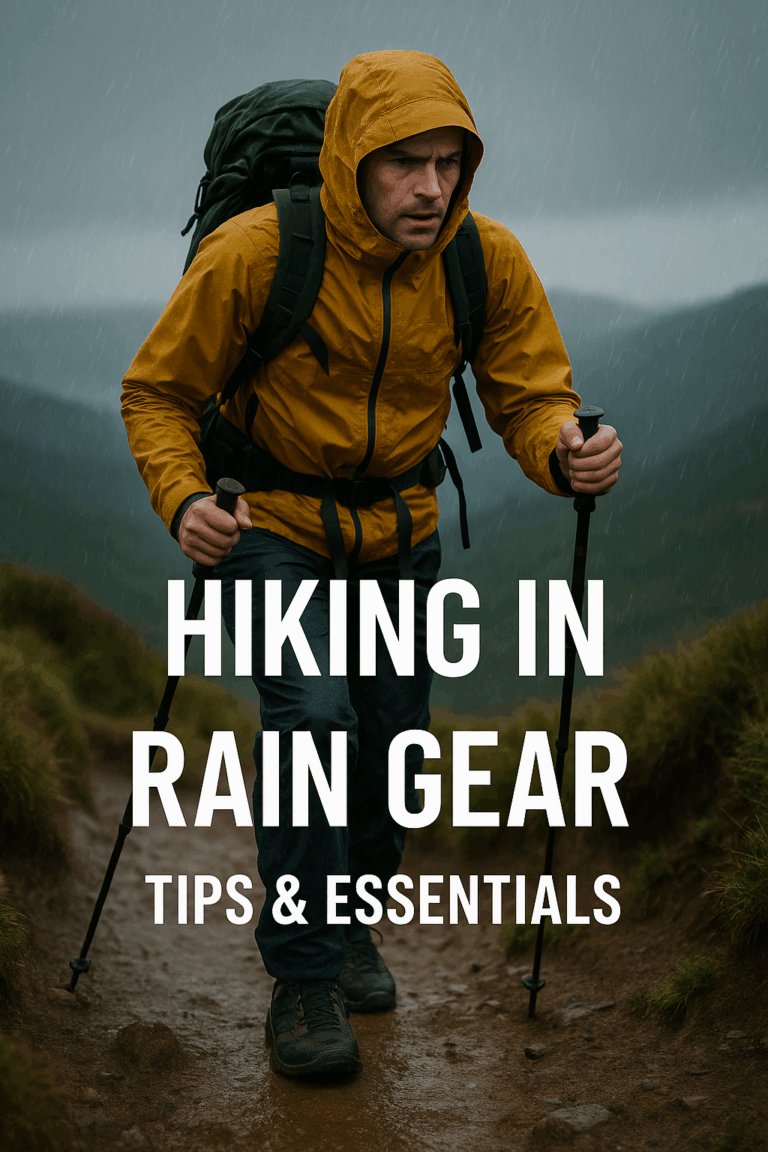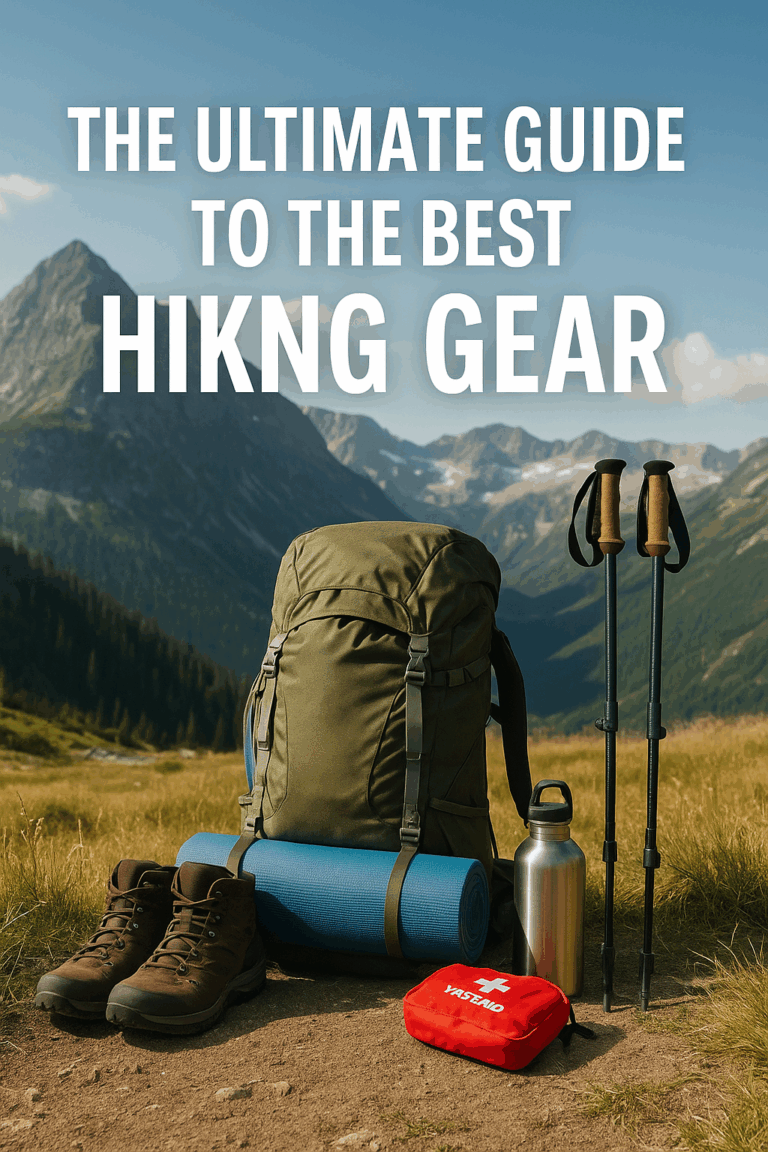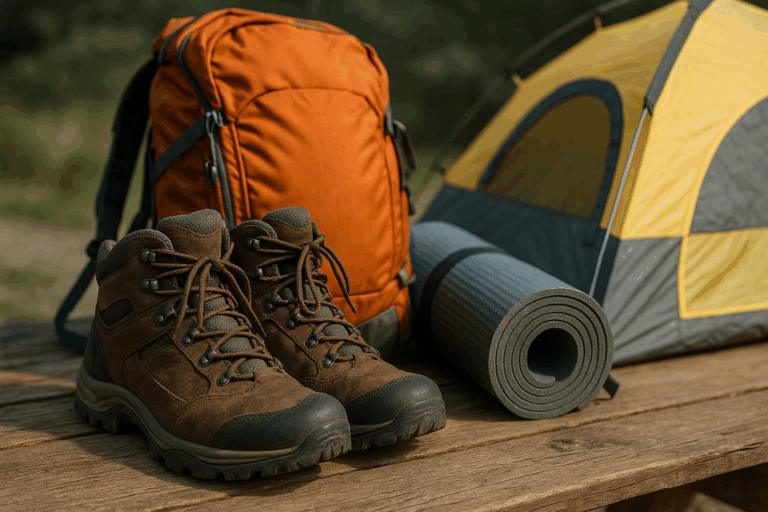Women’s Specific Hiking Gear: Is It Worth the Investment?
Introduction
Did you know that 46% of hikers are women, yet most hiking gear is still designed with male body proportions in mind? This shocking statistic reveals why so many female adventurers struggle with ill-fitting equipment that can turn an epic trail experience into an uncomfortable ordeal! The solution lies in understanding the importance of women’s specific hiking gear and how it can transform your outdoor adventures.
Gone are the days when women had to settle for “shrink it and pink it” outdoor gear. Today’s market offers incredible innovations in women’s specific hiking gear specifically engineered for women’s unique anatomical needs – from narrower shoulders and wider hips to different foot shapes and torso lengths. I’ve spent years testing female hiking gear on countless trails, and let me tell you, the right women’s specific hiking gear doesn’t just improve comfort; it can literally transform your hiking experience and boost your confidence on any adventure.
This comprehensive guide to women’s specific hiking gear will help you understand why proper fit matters, which brands actually deliver on their promises, and how to build a collection that works with your body instead of against it. Whether you’re planning your first day hike or preparing for a multi-week backpacking expedition, this women’s outdoor gear buying guide will help you choose ladies outdoor equipment that actually works with your body, not against it.
Why Women’s Specific Hiking Gear Matters
My Expensive Learning Curve with “Unisex” Gear
I’ll be honest – for the first three years of my hiking journey, I was that stubborn woman who insisted “gear is gear” and kept buying men’s or unisex equipment because it was often cheaper and more readily available. Boy, was I wrong about that mindset when it comes to women’s specific hiking gear.
The wake-up call came during a particularly brutal 12-mile hike in the Adirondacks. My men’s large backpack kept sliding down my torso no matter how tight I cinched the straps, creating pressure points on my lower back that had me stopping every twenty minutes. The hip belt sat completely wrong on my narrower waist, transferring zero weight to my hips like it’s supposed to. This is exactly why female-specific hiking equipment matters so much.
The Science Behind Why Women’s Bodies Need Different Gear
Here’s what I learned the hard way about anatomical differences: women typically have shorter torsos, narrower shoulders, wider hips, and a lower center of gravity compared to men. These aren’t just minor variations – they fundamentally change how women’s specific hiking gear should fit and function. Women’s torso lengths average 1.5 to 2 inches shorter than men’s, which affects everything from women’s backpacking gear sizing to sleeping bag length. Our hip-to-waist ratio is also significantly different, with women having approximately 10% wider hips relative to waist circumference.
Where Generic Gear Falls Short
When it comes to footwear, the differences are even more dramatic. Women’s feet aren’t just smaller men’s feet – we have narrower heels, lower insteps, and different arch patterns. I spent two seasons dealing with heel slippage and hot spots before investing in proper women’s hiking boots.
Performance-wise, ill-fitting gear creates a cascade of problems. Poor weight distribution leads to faster fatigue, increased risk of injury, and honestly, just makes hiking way less enjoyable. When your pack doesn’t sit right, you compensate by adjusting your posture and gait, which can cause knee pain, back strain, and muscle imbalances over time.
The Game-Changing Investment That Actually Paid Off
The investment in women’s specific hiking gear pays off immediately. My current setup includes a women’s 45-liter pack that actually fits my 16-inch torso, hiking pants with a rise that accommodates my hip-to-waist ratio, and women’s hiking boots engineered for women’s foot anatomy. The difference in my hiking performance and enjoyment level is night and day compared to my early days of making do with poorly fitting gear.
Essential Women’s Hiking Boots and Footwear
The Foot Anatomy Wake-Up Call That Changed Everything
Let me tell you about the time I hiked 8 miles with massive blisters because I thought my brother’s hand-me-down boots would work just fine. Spoiler alert: they didn’t, and I learned some painful lessons about women’s foot anatomy that day and why women’s hiking footwear is so critical.
Women’s feet aren’t just smaller men’s feet – we’re built completely different down there. Our heels are typically 15-20% narrower relative to the forefoot width, which means we need a more tapered heel cup to prevent that annoying heel slippage. We also have lower-volume feet overall, meaning less height from the ground to the top of our foot. This is why women’s trail running shoes and women’s hiking boots are designed with these anatomical differences in mind.
My 2025 Go-To Boot Recommendations
After going through probably 12 different pairs over the years, here’s what actually works for women’s hiking footwear. For all-around hiking, I swear by the Salomon Quest 4D GTX Women’s – the fit is phenomenal and they’ve held up through everything from muddy spring hikes to rocky scrambles. For lightweight day hiking, the Merrell Moab 3 Women’s has been my reliable workhorse for three seasons now.
Boots vs. Shoes vs. Trail Runners: The Eternal Debate
This choice used to stress me out until I realized it’s really about matching your women’s specific hiking gear to your hiking style and ankle stability needs. I’ve got weak ankles from an old soccer injury, so mid-height boots are non-negotiable for me on technical terrain.
Women’s trail running shoes work great for well-maintained trails and shorter distances where you want that nimble, lightweight feel. Low-cut hiking shoes split the difference – more support than trail runners but not as bulky as boots.
The Fitting Process That Actually Works
Here’s where most people mess up when shopping for women’s hiking footwear: they try on boots with thin cotton socks and call it good. Wrong move. Always bring the hiking socks you’ll actually wear, and shop for boots in the afternoon when your feet are slightly swollen like they’ll be on the trail.
Your toes should have about a thumb’s width of space in front – seriously, measure it. When you’re going downhill, your foot slides forward in the boot, and trust me, black toenails are no joke.
The Sock Game-Changer Nobody Talks About
Merino wool socks changed my hiking life, no exaggeration. Darn Tough Vermont and Smartwool are worth every penny for their moisture-wicking and anti-odor properties. The liner sock system works wonders for blister prevention too – thin synthetic liner underneath wool hiking socks creates friction between the sock layers instead of against your skin.
For in-depth comparisons and top-rated options, check out OutdoorGearLab’s Women’s Hiking Boots Review and REI’s guide to the best hiking boots. These breakdowns cover comfort, durability, and real-world trail performance across various brands and budgets. You can also explore Merrell’s women’s hiking boots collection for their latest offerings.
Women’s Hiking Backpacks: Finding Your Perfect Fit
The $400 Mistake That Taught Me Everything About Torso Length
Three years ago, I bought what I thought was the perfect backpack – a highly-rated 50-liter pack that looked amazing online and had stellar reviews. Problem was, I never measured my torso length properly and ended up with a pack designed for someone 4 inches taller than me. This is a common mistake when shopping for women’s backpacking gear.
Measuring your torso length isn’t rocket science, but I definitely did it wrong the first time. You need someone to help you find the bony bump at the base of your neck (C7 vertebra) and measure straight down to the top of your hip bones. Most women fall between 15-19 inches, while men typically range 18-22 inches. This measurement is crucial for proper women’s specific hiking gear fit.
Why Women’s Shoulder Straps Actually Matter
Women’s shoulder straps need to curve differently to accommodate our narrower shoulder width and, let’s be honest, our chest anatomy. Standard unisex packs often have straps that are too wide-set and straight, which creates pressure points and gaps that don’t distribute weight properly.
The straps on my current women’s backpacking gear (an Osprey Ariel) curve inward more and sit closer together at the top. This prevents that annoying sliding-off-the-shoulders problem I used to deal with constantly.
Getting Hip Belt Positioning Right
The hip belt breakthrough came when I realized it should sit on my actual hip bones, not my waist. I used to cinch that thing right at my natural waist and wonder why my back hurt so much. The belt needs to wrap around the top of your hip bones to transfer weight from your shoulders to your pelvis and legs.
Women’s backpacking gear typically features hip belts that are more curved and padded differently to accommodate our wider hip-to-waist ratio. When I finally got the positioning right, it was like magic. Suddenly I could carry 30+ pounds for hours without that burning sensation between my shoulder blades.
Day Pack vs. Multi-Day: Capacity Planning Done Right
For day hikes under 8 miles, I stick with my 25-liter Deuter pack from my women’s day hiking gear collection. Multi-day trips require 45-65 liters depending on season and duration. My go-to is a 50-liter pack for 2-3 day trips in good weather.
My Current Favorites by Activity Type
For day hiking, I’m completely sold on the Gregory Maya series as part of my women’s hiking gear list. Multi-day backpacking, the Osprey Ariel has been my reliable partner for two years now. The REI Flash series offers solid value for occasional backpackers looking for quality female-specific hiking equipment.
If you’re unsure how to measure your torso or find a proper pack fit, REI’s backpack fit and adjustment guide is a great starting point. For brand-specific sizing and technology, visit Osprey’s Women’s Fit Guide or Gregory’s Pack Fit Guide.
Women’s Hiking Clothing and Layering Systems
The Base Layer Breakthrough That Saved My Skin
For years, I hiked in cotton t-shirts and regular underwear because I thought “workout clothes are workout clothes.” That mindset nearly ruined a weekend backpacking trip in Vermont when temps dropped unexpectedly and I couldn’t get warm no matter how many layers I piled on. This is when I realized the importance of proper women’s hiking clothing systems.
The game-changer was discovering merino wool base layers specifically cut for women’s bodies. My Smartwool Merino 150 base layer has a longer torso length that doesn’t ride up when I’m scrambling over rocks, and the side seams are positioned to accommodate curves without creating weird bunching. This is exactly what makes women’s outdoor apparel so different from generic options.
The Sports Bra Situation Nobody Talks About Enough
Let’s be real – hiking puts different demands on your chest than running or gym workouts. You’re moving in all directions, scrambling over rocks, wearing a pack with chest straps, and dealing with varying temperatures for hours at a time. This is why specialized women’s outdoor clothing is essential.
I’ve found that medium-support bras with wider, padded straps work best under pack straps as part of my ladies hiking clothes collection. The Moving Comfort Juno (now Brooks) has been my reliable choice for three seasons. For longer hikes, moisture-wicking fabric becomes crucial in women’s trail gear.
Pants and Shorts That Actually Fit Real Women
Most hiking pants are basically men’s cuts with pink stitching, which creates all sorts of fit issues through the hips, waist, and inseam length. This is exactly why women’s specific hiking gear matters so much in the clothing department.
The Outdoor Research Ferrosi pants have a curved waistband that follows your natural hip line instead of creating that weird gap in the back. This is what quality ladies outdoor clothing should offer.
For shorts, the inseam length makes a huge difference in comfort and chafing prevention. I’ve settled on 5-7 inch inseams depending on the activity. The Patagonia Baggies 5″ have become my summer staple because they don’t ride up and represent excellent women’s outdoor apparel design.
Rain Gear That Doesn’t Leak at the Seams
Finding rain jackets that fit properly through the bust and waist took me forever when building my women’s hiking clothing systems. The Arc’teryx Beta AR jacket in women’s fit has been worth every penny of its ridiculous price tag. The articulated sleeves and gusseted underarms give you full range of motion without pulling tight across the chest.
Sun Protection That Actually Protects
UPF-rated clothing has become non-negotiable for me after getting seriously burned through a regular cotton shirt during a high-altitude hike in Colorado. My Outdoor Research Echo long-sleeve shirt has UPF 15 protection and thumb holes that keep the sleeves down over my hands. This is essential women’s trail clothing for high-altitude adventures.
When it comes to layering and trail clothing that actually fits real women, REI’s guide to choosing hiking clothes and Bearfoot Theory’s women’s hiking apparel guide are both great starting points. For a well-rounded overview, The Blonde Abroad’s hiking gear guide for women is also worth a look.
Women’s Specific Safety and Navigation Gear
The Reality Check That Made Me Take Safety Seriously
I used to be one of those hikers who thought “it won’t happen to me” until I got seriously lost on what should have been a simple 4-mile loop trail in North Carolina. What started as a wrong turn turned into 6 hours of bushwhacking in fading daylight with a dead phone battery.
That experience completely changed how I approach female hiking safety gear, especially as someone who often hikes solo. The scariest part wasn’t being lost – it was realizing how unprepared I was for an emergency situation.
Personal Safety Devices That Actually Work
After that North Carolina incident, I invested in a Garmin inReach Mini satellite communicator, and it’s been worth every penny for peace of mind. This little device lets me send GPS coordinates to emergency contacts or search and rescue even when I’m completely out of cell range. It’s become an essential part of my women’s wilderness equipment.
I also carry a Fox 40 Classic whistle on every hike now as part of my female hiking safety gear. Three sharp blasts is the universal distress signal, and the sound carries much further than yelling.
First Aid Essentials With Women’s Health in Mind
Standard first aid kits often miss some basics that women need on the trail. I’ve customized mine to include extra supplies for menstrual management – tampons and pads obviously, but also pain relievers specifically for cramps and wet wipes for hygiene when there’s no running water. This is crucial female backpacker essentials planning.
Urinary tract infection prevention is huge for women who spend long days on the trail. I pack extra electrolyte supplements and cranberry pills, plus feminine hygiene wipes that are safe for sensitive areas as part of my ladies hiking safety equipment.
Headlamps That Don’t Give You a Headache
Finding headlamps that fit properly took way more effort than it should have. Most are designed for larger head sizes, which means they either bounce around or need to be cinched so tight they give you a headache after an hour. This is why women’s specific hiking gear extends to lighting equipment too.
The Petzl Tikka has adjustable straps that actually work for smaller heads without over-tightening. For winter hiking, I upgraded to the Black Diamond Spot 400 as part of my women’s hiking accessories collection.
Multi-Tools Designed for Real Hands
Most multi-tools are sized for larger hands with more grip strength. The Gerber Dime is compact enough that I can actually manipulate all the tools comfortably as part of my female adventure gear. For a more robust option, the Leatherman Skeletool CX has a better grip design than their traditional models.
Navigating the trail safely starts with gear that’s made for your body. Check out Happiest Outdoors’ guide on choosing hiking gear for different body types and REI’s navigation basics to sharpen your wayfinding skills.
Comfort and Convenience Accessories for Women
The Trekking Pole Epiphany That Changed My Hiking Game
I resisted trekking poles for the longest time because I thought they made me look like I couldn’t handle hiking on my own. What a mistake that was. The turning point came during a steep descent in the Smokies when I watched other hikers glide down confidently while I was slip-sliding and grabbing onto trees.
Women’s specific trekking gear like my Black Diamond Trail Pro poles have smaller grip circumferences and shorter strap systems that actually fit our hand size and wrist proportions. The cork grips mold to my hands over time and are a perfect example of why women’s trekking accessories matter.
Sleeping Gear That Actually Fits Women’s Bodies
Women’s versions of sleeping pads aren’t just marketing fluff. We have different pressure points and body heat distribution patterns compared to men. My Therm-a-Rest ProLite Women’s pad has extra insulation in the torso and foot areas where women tend to lose heat faster. This is essential women’s camping gear design.
For sleeping bags, the women’s cut in my REI Magma has extra room through the hips and less excess fabric in the shoulders. I learned the hard way that temperature ratings work differently for women too – we generally sleep colder than men. This is crucial information for any women’s outdoor gear buying guide.
Backcountry Hygiene That Doesn’t Compromise
This is where hiking gets real for women – we can’t just duck behind a tree and call it good. Pee funnels changed my life, honestly. The pStyle has made it possible to go without fully undressing in cold weather and is now essential female adventure accessories.
Menstrual cups have been a game-changer for backpacking. The DivaCup can be worn for up to 12 hours, which means fewer bathroom trips and less waste to pack out. These are crucial female backpacking essentials.
Hydration Systems That Actually Work for Smaller Hands
Water bottle design matters more than you’d think when you’re drinking frequently throughout a long hiking day. My go-to is the 32oz Nalgene in the narrow-mouth design. The smaller opening prevents spills when hiking on uneven terrain, and the bottle diameter fits my grip better. This attention to detail is what separates quality women’s specific hiking gear from generic options.
Organization Systems That Prevent Pack Chaos
Having organized gear makes everything easier and faster on the trail. I use different colored stuff sacks for different categories – red for first aid, blue for electronics, green for food. It sounds obsessive but saves tons of time digging through your pack and is part of smart women’s hiking accessories planning.
Budget-Friendly vs. Premium Women’s Hiking Gear
My $2000 Mistake That Taught Me About Smart Spending
When I first got serious about hiking, I went completely overboard and bought every piece of “must-have” gear in one expensive shopping spree. Problem was, I had no idea what I actually needed or how different women’s specific hiking gear would perform for my specific hiking style.
That $400 rain jacket? Barely used it the first year because I mostly did fair-weather day hikes. Meanwhile, I was wearing cotton socks and getting blisters because I’d blown my budget on the flashy stuff instead of focusing on basics that actually impact comfort and safety.
Where Premium Investment Actually Pays Off
After five years of trial and error, I’ve figured out which women’s outdoor equipment categories justify the splurge for women specifically. Your feet and your back take the most abuse, so that’s where quality matters most in your women’s hiking gear list.
Women’s hiking boots are non-negotiable for me now. My $180 Salomon boots have lasted three years of regular use and still provide excellent support. Your backpack is the other must-invest category, especially for women since fit is so critical in female-specific hiking equipment.
Budget Wins That Don’t Compromise Performance
Rain gear is a perfect example – unless you’re doing serious mountaineering, a $60 REI Co-op rain jacket performs almost as well as those $300 Arc’teryx pieces for day hiking and weekend backpacking. This shows that smart shopping for women’s outdoor clothing doesn’t always mean buying the most expensive option.
For hiking pants, I’ve had great luck with discount brands like 32 Degrees from Costco as part of my ladies outdoor clothing collection. Accessories like trekking poles and water bottles work just fine from budget sources in your women’s trail gear setup.
The Real Cost-Per-Use Math
I started tracking every gear purchase and how often I actually used each item in my women’s specific hiking gear collection. My expensive rain jacket got used maybe 8 times the first year – that’s $50 per use. Meanwhile, my $15 hiking socks got worn 40+ times and worked out to less than 40 cents per hike.
Smart Shopping Strategies
End-of-season sales are gold mines for women’s outdoor equipment. I do most of my shopping in late fall when retailers are clearing summer inventory. REI’s member sales are consistently good deals, especially their anniversary sale in May for female hiking gear.
For expensive items you’ll only use occasionally, rental makes way more sense than buying. Start with the basics that impact every hike in your women’s hiking gear guide, then add quality pieces gradually as you figure out your preferences.
For shopping smarter, especially during sales or trying new gear, REI’s member deals often include generous return policies. When evaluating products, I also rely heavily on reviews that speak to real women’s experiences like those on OutdoorGearLab and Backtrails’ blog.
Shopping Tips and Fitting Guidelines
The Online Shopping Disaster That Cost Me $300
Two years ago, I ordered what I thought would be the perfect hiking outfit online – jacket, pants, and boots all from the same brand. What arrived was a comedy of errors: pants that fit like high-waters, a jacket that pulled tight across my chest but hung loose everywhere else, and boots that were somehow too narrow AND too long.
That expensive lesson taught me that measuring yourself correctly is way more complicated than it seems, especially for women’s specific hiking gear where fit requirements are so specific.
The Right Way to Measure Yourself
Don’t do it alone – you need someone to help with torso length, shoulder width, and back measurements when shopping for female-specific hiking equipment. For torso length, have someone find the bony bump at the base of your neck (C7 vertebra) and measure straight down to the top of your hip bones.
Bust measurements for outdoor gear are different from bra sizing. Measure around the fullest part of your chest while wearing the sports bra you’ll actually hike in. For foot measurements, do it in the afternoon when your feet are slightly swollen like they’ll be during hiking. This is crucial for proper women’s hiking footwear fitting.
Questions That Get You Better Gear Recommendations
When I shop at outdoor retailers now, I come prepared with specific questions about women’s outdoor gear recommendations. I always ask about the return policy first. “How does this brand’s sizing compare to [other brand I’m familiar with]?” is super helpful because sizing varies wildly between manufacturers, especially in ladies outdoor equipment.
Making the Most of Return Policies
REI’s return policy spoiled me for all other outdoor retailers. Being able to return women’s specific hiking gear after actually using it on hikes means you can discover fit issues that don’t show up in the store.
When testing gear at home, I wear it around the house for extended periods while doing normal activities. For backpacks, I load them with actual weight and wear them for at least 30 minutes around the house to test the women’s backpacking equipment properly.
Reading Reviews Like a Detective
Not all reviews are created equal, especially for female hiking gear. I look specifically for reviews from women who mention their measurements and body type. Comments about “rides up during activity” or “tight through the hips” are way more useful than “great jacket, love it!” when reading women’s outdoor equipment reviews.
Testing Gear Before Big Trips
I learned this lesson the hard way: never wear brand-new women’s specific hiking gear on important hikes. I always break in new boots with at least 20 miles of easier hiking before attempting anything challenging. Weather testing is crucial too – I seek out opportunities to use rain gear during actual storms as part of my ladies hiking equipment reviews process.
Conclusion
Finding the right women’s specific hiking gear isn’t just about comfort – it’s about unlocking your full potential on the trail! When your women’s hiking boots fit properly, your women’s backpacking gear distributes weight correctly, and your ladies hiking clothes move with your body instead of against it, hiking transforms from an endurance test into pure joy.
Remember, every woman’s body is unique, so what works for your hiking buddy might not work for you. Take time to understand your specific needs, measure carefully, and don’t be afraid to return items that don’t fit perfectly. Your future self will thank you when you’re crushing that summit with female-specific hiking equipment that actually supports your adventure!
Ready to upgrade your hiking experience? Start with one essential piece of women’s specific hiking gear – whether it’s properly fitted women’s hiking footwear or a women’s specific backpack – and build from there. The trails are calling, and now you have the knowledge to answer with confidence!







